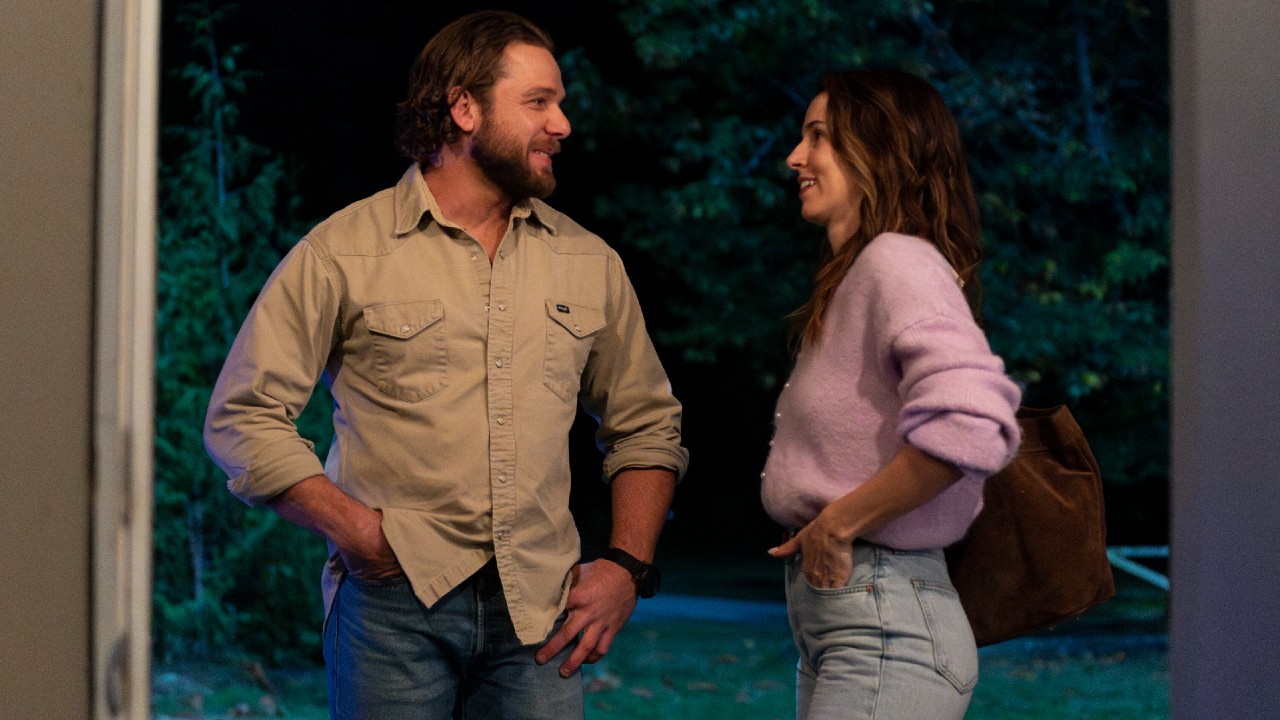Battlestar Galactica Ending: Where They Ended Up, Who Survived And What Happens Next
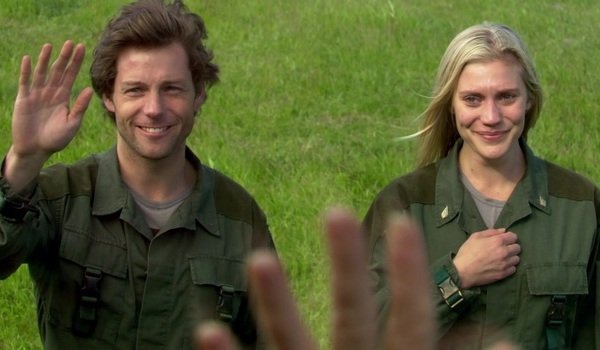
Warning: major spoilers ahead for all four seasons of Battlestar Galactica.
Battlestar Galactica was a series that set a new standard for what audiences can expect from sci fi television. The show could have been little more than a campy project about humans vs. robots in space; instead, it was a saga that covered everything from technology to theology to what it means to be human. Yes, robots did try to destroy humanity, and yes, there were battles in space, but Battlestar was so much more.
The Battlestar Galactica series finale was an epic three-parter that had to tackle an awful lot of very loose ends. The ending has been divisive among fans ever since it first aired back in 2009. The final hour or so is poignant enough to get most people sniffling, but it's also pretty vague and confusing in terms of how it wrapped things up for the show. So, join us as we look back at what the frak happened in the three "Daybreak" episodes at the end Battlestar Galactica back in 2009.
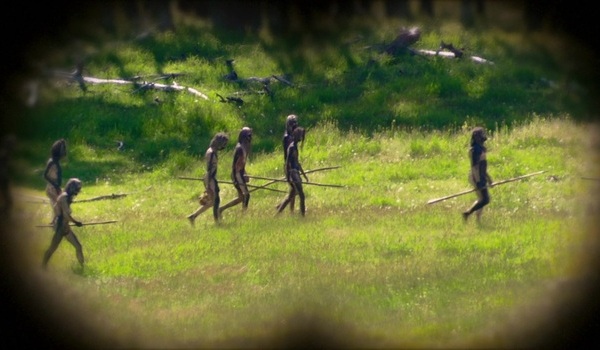
Where They Ended Up
After the survivors of the twelve colonies spent years traversing the stars and avoiding being blown to smithereens by enemy Cylons, they finally made it to a planet that had not yet been devastated by warfare. Given that the most advanced inhabitants were primitive humans, there was no existing name for the planet. It wasn't the original Earth that the survivors had sought for so long, but it was close enough that BIll Adama had no qualms about giving it the same name.
The colony survivors ended up on this new Earth thanks to Kara suddenly realizing the meaning of the tune that would become "All Along The Watchtower." The notes gave her the coordinates for Earth, and she was able to jump them to safety from the exploding Cylon ship. With the grand old Galactica crippled from the final jump, the survivors' only choice was to settle wherever Starbuck had landed them. The fleet had just enough juice left that what was left of Sam Anders was able to pilot the ships into the sun.
The 38,000 or so humans who survived the Battlestar Galactica saga were divided into groups to settle all over the world, with nothing in the way of technology and no conveniences beyond the clothes on their back. It was a bold undertaking by a people ready for a fresh start. Considering that the survivors' DNA was a surprisingly close match to the primitive humans already on Earth, there was even the potential to breed and create a new gene pool.
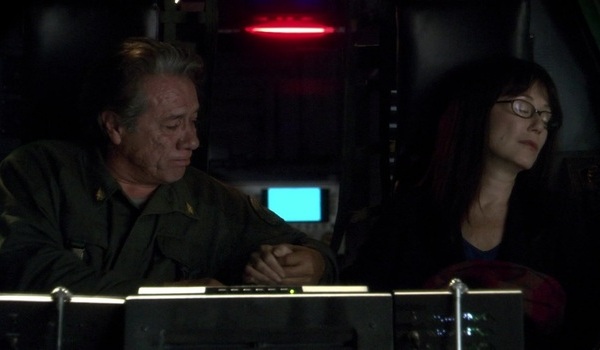
Who Survived
Unfortunately, a fresh start was not in the cards for all of the folks who lasted all four seasons on Battlestar Galactica. Laura Roslin finally lost her life to the cancer that had been slowly killing her ever since the series premiere, although she was able to enjoy her final hours knowing that her people had a chance on a beautiful new world. Her death in the Raptor with Adama was a heartbreaking but fitting end to her journey. Roslin could finally rest, and Adama would remember her by building a cabin with an easterly view.
Your Daily Blend of Entertainment News
Earth was the end for Starbuck as well. Kara technically died way back in Season 3, but she mysteriously returned for Season 4 with an apparent higher purpose. The reprieve from death was relatively brief, and she vanished into the great beyond before the end of the series finale.
Apollo survived the series, although he got a bit of a raw deal after the departure of his dad and the disappearance of his pal/star-crossed lady love Kara. Galen Tyrol decided that he'd had enough of people and would settle all by his lonesome on Scotland, and the Tigh twosome seemed in store for a happily-ever-after of sorts. Helo and Athena were last seen telling young Hera about all she would learn on Earth. Baltar and his Six stayed together for whatever the future would hold. Along with 38,000 others, they survived to start anew.
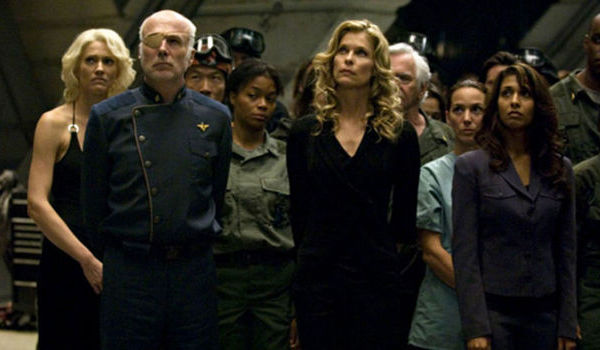
The Future Of The Cylons
The biggest force of Cavil and the rest of the malevolent Cylons were destroyed with the colony base after the good guys rescued Hera, and there were still plenty of friendly Cylons around in the wake of the destruction. The Twos, Sixes, and Eights decided to stay on Earth and join the humans in attempting to find a new way of life on a new planet. The self-aware Centurion Cylons who assisted in the final battle were deemed worthy of their freedom, and they were granted control of the Basestar to jump wherever they wanted in space.
The human survivors took a big leap of faith that none of the Cylons would follow in the footsteps of their forebears and decide to swing by Earth to massacre them from above. Luckily for them, the gamble paid off, and Earth evidently became a prosperous new home for those who chose to stay.
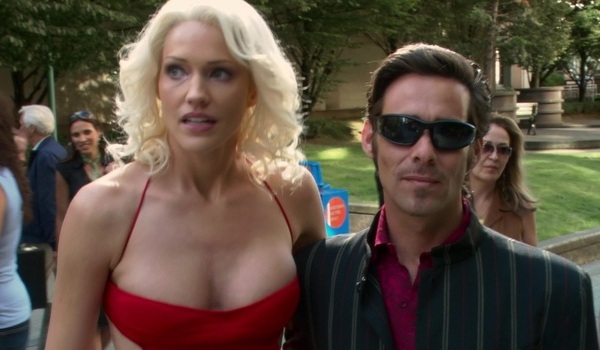
What Happens Next
As sad as the finale was with the death of Laura Roslin and the farewells to Starbuck and Sam, it didn't actually get all that weird until the very end when a flashforward to 150,000 years in the future showed Baltar in sunglasses and Six in her classic red dress in the present day. Six exposited to Baltar that scientists had recently discovered the remains of an ancestor common to all living humans, and the twosome strolled down a modern street to debate the possibility of Earth coming to as bloody an end as Caprica all those centuries ago. Six believed that the law of averages meant that humankind was in for a break from periodic slaughter from sentient machines. The ending montage of robots, however, indicated that humans might have new versions of Cylons in the works. We may still face our doom if we make our machines too smart and too sentient.
There were still some gaps in the narrative that required major leaps of logic, but showrunner Ronald D. Moore had a fast and easy explanation for everything: God did it. Basically, anything that hadn't been explained could be chalked up to a divine influence of some sort. That influence evidently doesn't like going by the name "God," but he/she/it evidently popped into the narrative to connect dots throughout the seasons. Forms of Baltar and Six still exist in the 21st century somehow? God did it. Kara came back from the dead? Totally God. Hera was conceived because of the genuine love between Helo and Athena? Thanks, God. Basically, a whole lot of God filled in the blanks for the finale of Battlestar Galactica. It was an unexpected twist for those who expected more straight answers than spirituality out of the last episodes ever, and it remains largely divisive to date.
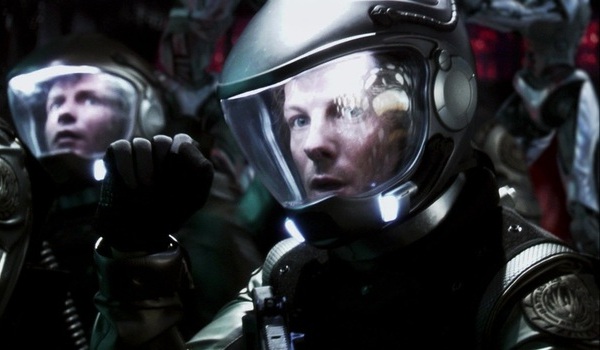
Alternate Endings
As it turns out, the ending we got in the "Daybreak" episodes wasn't the only one that had been considered by Ronald D. Moore and Co. Moore shared this tease in a Syfy message board comment (via io9) about what might have been the final chapter of Battlestar Galactica:
There was a point in the development process where we discussed the idea of the Galactica not being destroyed, but having somehow landed on the surface more or less intact, but unable to ever get into orbit again (the particulars here were never worked out, so don't ask how she made it down without being torn apart). We talked about them basically abandoning the ship and moving out into the world. Cut to the present-day, in Central America where there are these enormous mysterious mounds that archeologists have not been able to understand (it may have been South America, I can't recall the exact location, but these mounds really do exist). Someone is doing a new kind of survey of the mounds with some kind of ground-penetrating radar or something and lo and behold, we see the outlines of Galactica still buried under the surface.
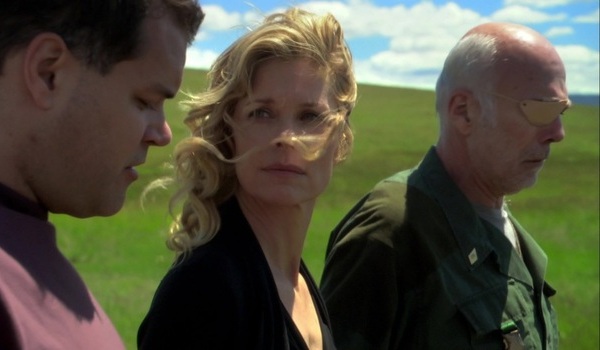
The showrunner had another ending up his sleeve as well. Evidently, we have the writer's strike of 2007 - 2008 to thank for the direction of the series finale. Moore revealed a second alternate ending in a chat with io9, saying this:
There was a different ending that we had, it was all about Ellen aboard the Colony. She was sort of turned by Cavil, because she found out that Tigh had impregnated Caprica Six, and that deeply embittered her. And she sort of became dedicated to the idea of destroying Galactica and the fleet out of revenge. And [she and Cavil] got Hera, and then the final confrontation became very personalized between Tigh versus Ellen, and should they forgive.
Originally, hell had no fury like a Cylon scorned. Moore ruled this particular ending out when he decided it wasn't grand enough for the final act of Battlestar Galactica, and so we didn't get our last glimpse of the survivors in the midst of a cyborgian domestic dispute.
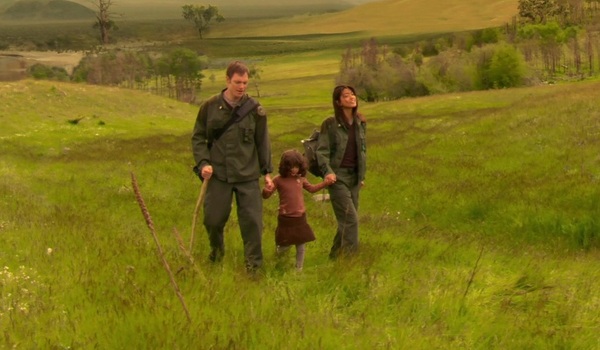
The Significance Of Hera
Helo and Athena's daughter Hera was last seen in Battlestar Galactica happily playing in the grasses of what would someday come to be known as Tanzania. In the flashforward, however, Baltar and Six revealed that Hera had a much greater significance to humanity than just as the only human/Cylon hybrid to arrive on Earth. In actuality, Hera's remains were discovered 150,000 years after her death. Scientists came to the decision that she represents Mitochondrial Eve, which made her the most recently-discovered common ancestress for all living humans.
The twist that Hera is Mitochondrial Eve and therefore a mother of sorts to the human race somewhat justifies the lengths that the crew aboard the Galactica went to in order to rescue her from Boomer and Cavil. Unfortunately, the flashforward also revealed that the remains of Mitochondrial Eve were those of a young woman. Hera may have lived long enough to hook up and bear the children of an early human, but she didn't live to become an old woman. Hera's happily-ever-after on Earth was short-lived.
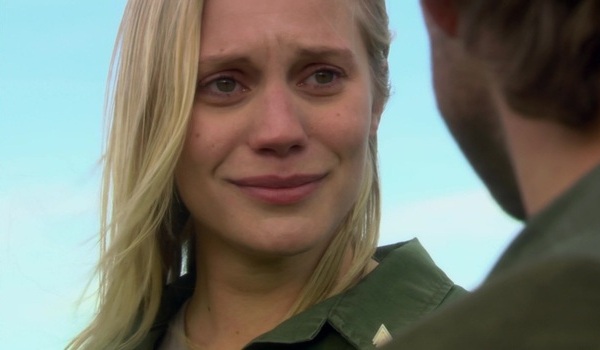
The Vanishing Of Starbuck
The death of Starbuck was one of the biggest "WTF?!" moments of the series back in Season 3. As one of the most central characters to the story, it just didn't seem right that she died in an episode that wasn't even a season finale. Her inexplicable return by the end of Season 3 with a brand new Viper and the coordinates for Earth 1.0 only complicated things. Ron Moore weighed in on Starbuck's significance to the final season of Battlestar Galactica in an interview with TVGuide, saying this:
Kara lived a mortal life, died and was resurrected to get them to their final destiny. Clearly she was a key player in the events that led to [the fleet's] finding a home. And, I don't know if there's any more beyond that. I think you could call her an angel, you could call her a demon, the second coming or the first coming, I guess, chronologically speaking. You can say that she had a certain messiah-like quality, in the classic resurrection story. There's a lot of different ways you can look at it, but the more we talked about it, the more we realized there was more in the ambiguity and mystery of it than there was in trying to give it more definition in the end.
So, basically, God did it. It's not much of an answer, but at least we got "All Along The Watchtower" out of it. Who knew that he/she/it had such awesome taste in music?
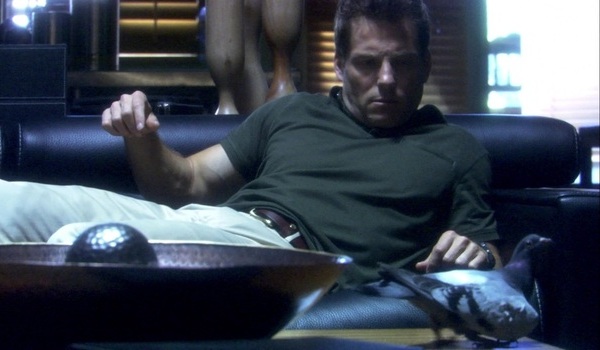
The Mysterious Bird
Finally, if you've spent the past seven years wondering what was up with the bird ambiguously flapping around Lee Adama's flashbacks... well, we can't help you there. As it turns out, Ron Moore doesn't know himself. He said this about the finale bird:
The image of the bird was just that - an image. I had no idea what it meant or symbolized, but just saw this picture of a man (didn't even know it was Lee) trying to chase a bird out of his house with a broom. We put it up on the board and then folded it into the story of Lee without trying to define exactly what it meant. I still don't know exactly what it meant. I don't want to.
No, the bird wasn't about Kara's spirit or Zak or even Lee letting go of his responsibilities. There was no secret symbolism to analyze. The bird was just a bird that got screentime in the series finale. Thanks, Ron Moore.
Check out our fall TV premiere schedule to see what ongoing shows you can watch in the near future.
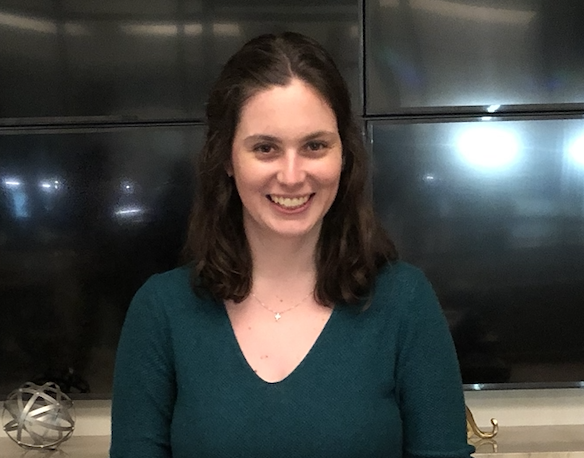
Laura turned a lifelong love of television into a valid reason to write and think about TV on a daily basis. She's not a doctor, lawyer, or detective, but watches a lot of them in primetime. CinemaBlend's resident expert and interviewer for One Chicago, the galaxy far, far away, and a variety of other primetime television. Will not time travel and can cite multiple TV shows to explain why. She does, however, want to believe that she can sneak references to The X-Files into daily conversation (and author bios).
